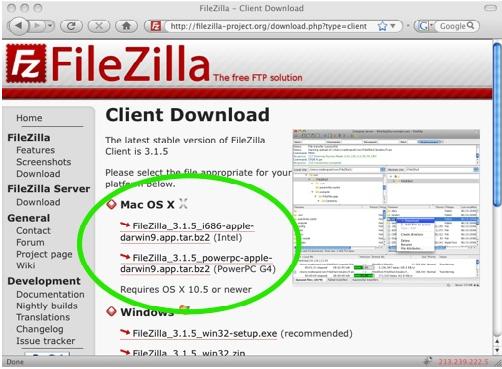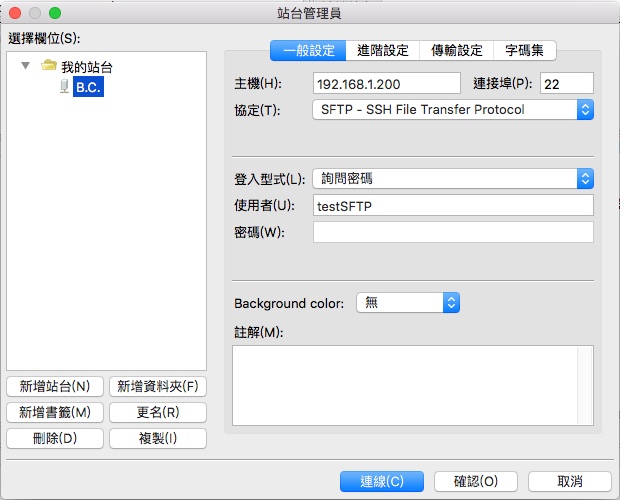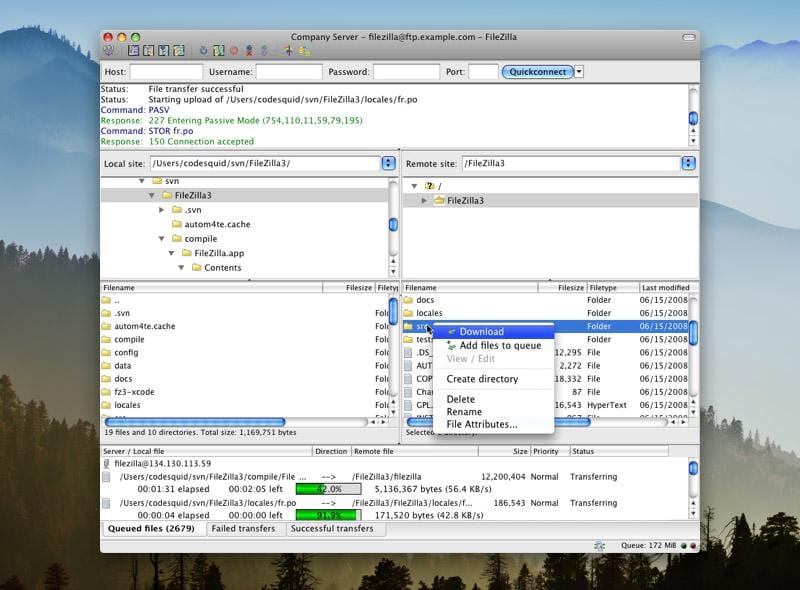

FTP might allow for anonymous log-ins, but it’s better to authenticate using a username and password. You will need a FTP/SFTP username and password to log into the server. Logging into the remote server is pretty straightforward. But keep in mind that FTP is generally not considered secure, so be careful. If you don’t have SSH access, you can contact your hosting provider, or you can use FTP. Note: To use SFTP, you will need to have SSH access enabled on your server. The best alternative is WinSCP, which is both free and Open Source. using the macOS’ Terminal, instead of a third party FTP client. There are more than 50 alternatives to FileZilla for a variety of platforms, including Windows, Mac, Linux, Xfce and MacPorts. I will be telling you how you can accomplish basic FTP/SFTP tasks such as uploading/downloading files, renaming, moving, deleting etc. For the purpose of illustration, I’m using a test server with Linux, Apache, MySQL and PHP installed on it, with SSH access enabled. Our service is compatible with this version of SSH and associated tools (scp and sftp).In this article I will be detailing how you can use the Terminal (Mac) as an FTP or SFTP client, to do a variety of tasks on remote servers.

Cyberduck - This is available for Windows and Mac OS X and contains support for other types of storage such as Amazon S3.Please note that there is a very serious security alert with respect to filezilla, see the following article for more information: Avast Blog Malformed FileZilla FTP client with login stealer. This client is cross-platform, with versions available for Windows, Mac OS X and Linux.

Filezilla - We recommend this SSH client if you are also intending to use the UCL Identifiable Data Handling Service (IDHS) because it is the same client tool recommended by the providers of that service.We've tested a number of Mac OS X ssh clients and recommend the following programs (others will work as long as they support SSHv2): With Graphical User Interface (GUI)


 0 kommentar(er)
0 kommentar(er)
